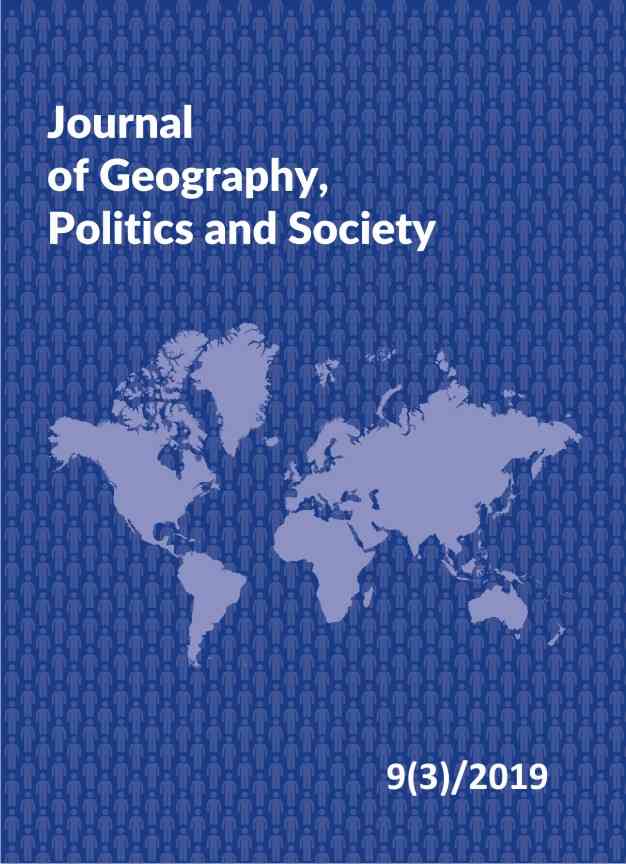Touristic valorization of cultural and historical heritage of the central core of Sarajevo based on Hilary du Cros method
DOI:
https://doi.org/10.26881/jpgs.2019.3.05Keywords:
touristic valorization, cultural heritage, Hilary du Cros, cultural tourism, BaščaršijaAbstract
Cultural and historical heritage, as well as rich history, very often represents a very important segment of tourism development in a certain city. Tourists are very inclined to the old town centers, which generally have many attractions of this type, and usually they are located in the immediate vicinity. Baščaršija is also an example of the old city area, which earlier was intended for commercial purposes only. Nowadays Baščaršija represents the most attractive part of the City of Sarajevo and its cultural features are a real attraction for many tourists. This paper focuses on the evaluation of the cultural - historical heritage within Baščaršija applying the method of tourist valorization of cultural resources by Hilary du Cross. Baščaršija is home to various religions, peoples and rich legacies from different historical periods that shaped its present-day appearance. The cultural heritage of Baščaršija includes numerous museums, religious buildings, fountains, interesting streets, as well as numerous authentic craft shops.
Downloads
References
Bibanović Z., 2015, Kulturno i prirodno naslijeđe Sarajeva (Eng. Cultural and Natural heritage of Sarajevo), Priručnik za turističko vođenje, Marketinško-informativni biro, Sarajevo.
Du Cros H., 2000, Planning for sustainable cultural heritage tourism in Hong Kong, Final Report to the Lord Wilson Heritage Trust Council, SAR.
Federalni zavod za statistiku (Eng. Federal Office of Statistics) http://fzs.ba/index.php/statisticke-oblasti/poslovnestatistike/turizam/ (accessed: 25 April 2019).
Lakićević M., Srđević B., 2011, Turistička valorizacija Topčiderskog parka u Beogradu (Eng. Touristic valorization of the Topcider park in Belgrade), Letopis naučnih radova, Beograd.
Mousavi S., Doratli N. Mousavi S., Moradiahari F., 2016, Defining cultural tourism, [in:] International Conference on Civil, Architecture and Sustainable Development, London, 70–75.
Muzej Sarajeva (Eng. The Sarajevo Museum), http://muzejsarajeva.ba (accessed: 17 April 2019).
Pantović M., Stamenković I., 2013, Tourism potential valorization of the river Danube in Novi Sad and its environment based on the Hilary du Cros model, European Researcher, 59(9–2), 2295–2305.
Pobric A., Robinson G.M., 2019, Recent urban development and gentrification in post-Dayton Sarajevo, Bosnia and Herzegovina, Cities 89, 281–295. doi: 10.1016/j.cities.2019.03.001.
Popović M., 2013, Kulturno – turistička valorizacija istorijskog jezgra Cetinja (Eng. Cultural – tourist valorization of the historical core of Cetinje), Godišnjak Fakulteta za kulturu i medije, 5, 695–708.
Richards G., 2002, Tourism attraction systems: Exploring Cultural Behaviour, Annals of Tourism Research, 29(4), 1048–1064, doi: 10.1016/S0160-7383(02)00026-9.
Strategija razvoja turizma Federacije Bosne i Hercegovine za period 2008.–2018. (Eng. Strategy of tourism development Federation of Bosnia and Herzegovina 2008–2018), 2008, Jnženjerski biro d.d., Prosinac.
The archaeological site of the remains of Tašlihan in Sarajevo, 2004, Commission to Preserve National Monuments, Sarajevo.
The architectural ensemble of the Brusa bezistan (Rustem Pasha bezistan, Small bezistan) with shops in Sarajevo, 2006, Commission to Preserve National Monuments, Sarajevo.
The architectural ensemble of the Ferhadija Mosque (Ferhad beg Mosque) with Harem in Sarajevo, 2004, Commission to Preserve National Monuments, Sarajevo.
The architectural ensemble of the Gazi Husref-bey (Bey’s) mosque in Sarajevo, 2006, Commission to Preserve National Monuments, Sarajevo.
The architectural ensemble of the Gazi Husrev-beg bezistan with shops in Sarajevo, 2006, Commission to Preserve National Monuments, Sarajevo.
The architectural ensemble of the Gazi Husrev-beg medresa with the site and remains of the Khanaqah in Sarajevo, 2006, Commission to Preserve National Monuments, Sarajevo.
The historic building of the Baščaršija (Havadža Durak) mosque in Sarajevo, 2006, Commission to Preserve National Monuments, Sarajevo.
The historic building of the City Hall in Sarajevo, 2006, Commission to Preserve National Monuments, Sarajevo.
The historic building of the old Jewish synagogue in Sarajevo (Il Kal Grandi – Great Temple, or Il Kal Vježu – Old Temple or Old Synagogue), 2003, Commission to Preserve National Monuments, Sarajevo.
The historic monument of the Clock Tower in Sarajevo, Municipality Stari Grad Sarajevo, 2006, Commission to Preserve National Monuments, Sarajevo.
Weaver D., 2006, Sustainable tourism – theory and practice, Elsevier Butterworth – Heinemann, Oxford.
Zavod za informatiku i statistiku Kantona Sarajevo (Eng. Institute for Informatics and Statistics of the Canton Sarajevo, http://zis.ks.gov.ba (accessed: 25 April 2019).
Zlatar B., 1996, Zlatno doba Sarajeva XVI stoljeće (Eng. The golden age of Sarajevo XVI century), Svjetlost, Sarajevo.

 Academic Scientific Journals
Academic Scientific Journals




